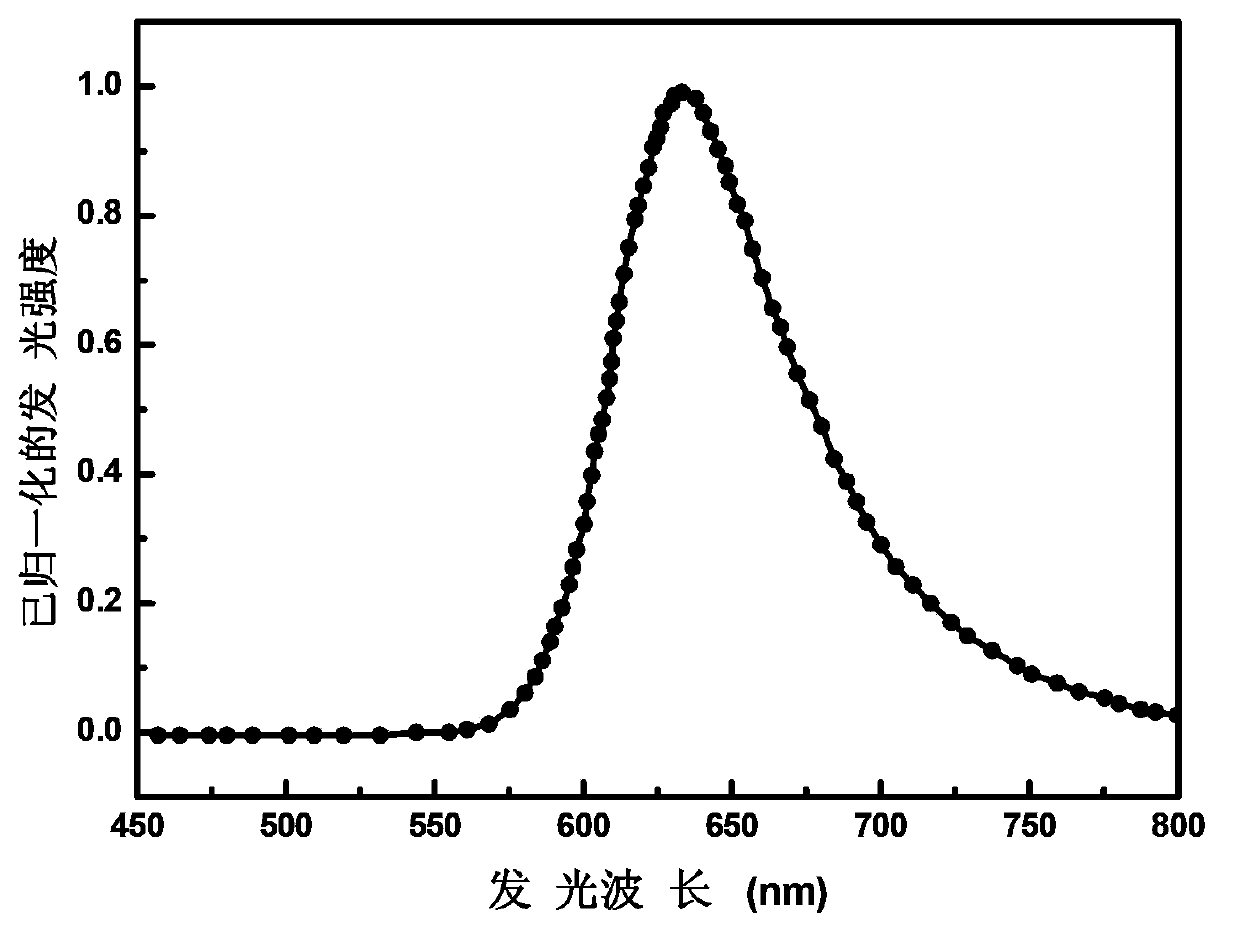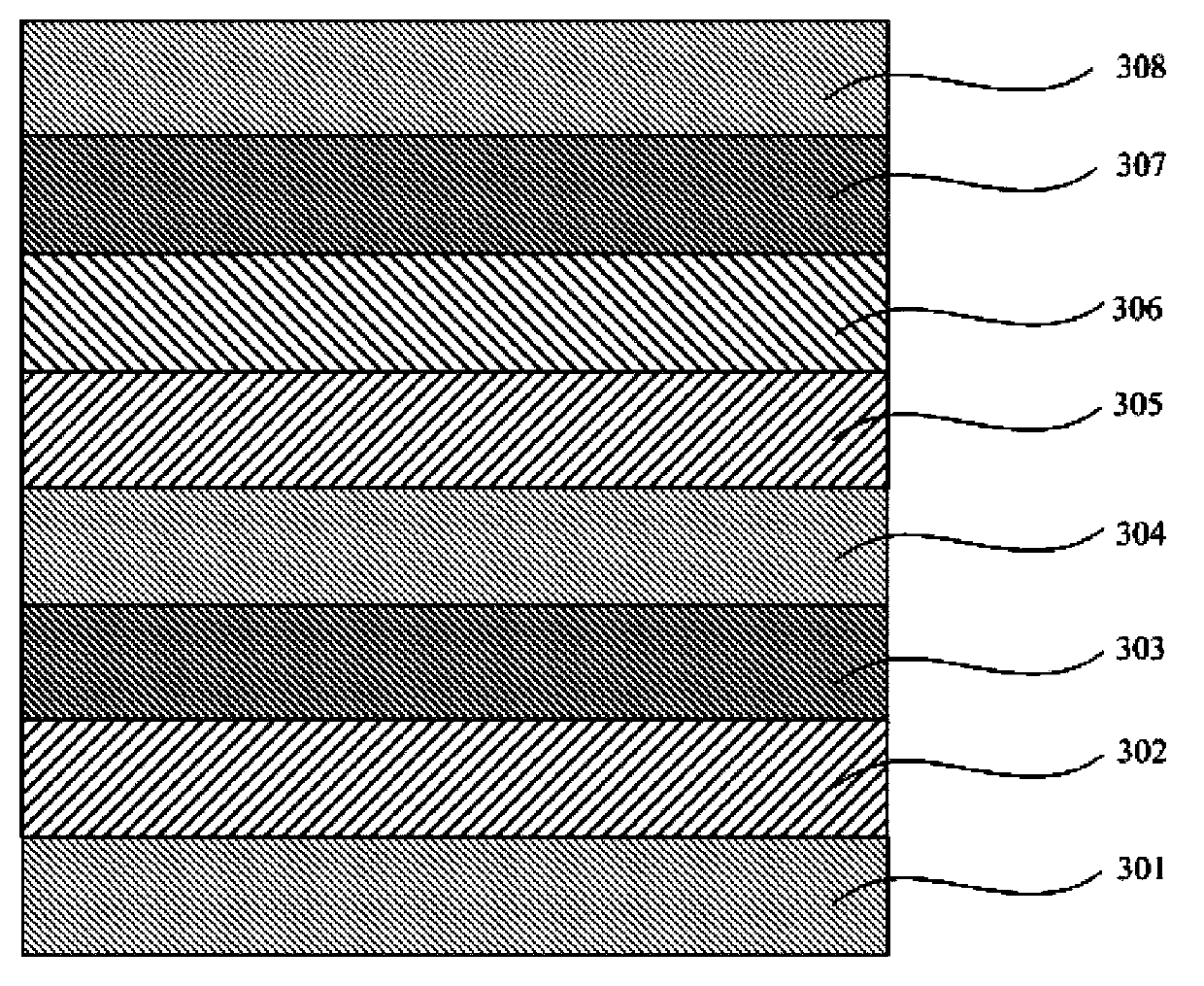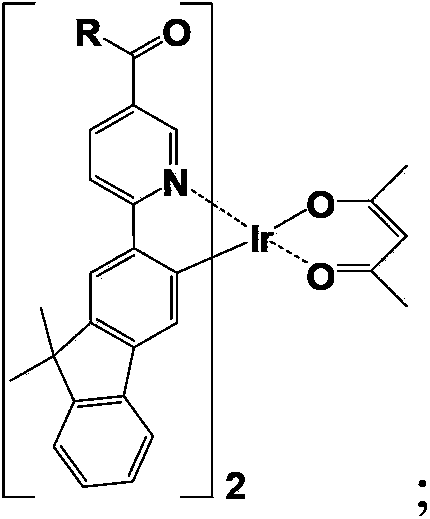Red organic electroluminescent material and its preparation method and application
An electroluminescence, electromechanical technology, applied in luminescent materials, organic chemistry, chemical instruments and methods, etc., can solve the problems of backwardness and rarely achieve the color purity of dark red and dark green light, to reduce the direct effect, Improve electroluminescence performance and balance the effect of charge transport
- Summary
- Abstract
- Description
- Claims
- Application Information
AI Technical Summary
Problems solved by technology
Method used
Image
Examples
preparation example Construction
[0038] The preparation method of the above-mentioned red light organic electroluminescent material comprises the following steps:
[0039] S1. Under the protection of inert gas (at least one of nitrogen and argon, the same below), the structural formula is Compound A (2,5-dibromopyridine) and the structural formula is Compound B (9,9-dimethyl-2-fluoreneboronic acid) was dissolved in tetrakis(triphenylphosphine) palladium (Pd(PPh 3 )4 ) or dichlorobis(triphenylphosphine) palladium (Pd(PPh 3 ) 2 Cl 2 ) in an organic solvent of catalyst and alkali, and then reflux the Suzuki coupling reaction at 63~120°C for 8~10h. After the reaction stops, the reaction solution is separated and purified to obtain the structural formula: Compound C (2-(9',9'-dimethylfluoren-2'yl)-5-bromopyridine); wherein, the molar ratio of compound A to compound B is 1:1.2; the molar ratio of catalyst to compound A Ratio is 0.05:1; The molar ratio of alkali and compound A is 10:3; Reaction formula is as...
Embodiment 1
[0065] Example 1: Complex bis[2-(9',9'-dimethylfluoren-2'-yl)-5-benzoylpyridine-N,C 2 Synthesis of '](acetylacetonate) iridium
[0066] (1) Synthesis of 2-(9',9'-dimethylfluoren-2'yl)-5-bromopyridine
[0067]
[0068] 0.71g (3.0mmol) 2,5-dibromopyridine, 0.86g (3.6mmol) 9,9-dimethyl-2-fluoreneboronic acid, 0.17g (0.15mmol) tetrakis (triphenylphosphine) palladium, 25mL toluene , 12.5mL of ethanol and 5mL of 2M sodium carbonate (10.0mmol) aqueous solution were refluxed at 120°C for 8h. After the reaction was cooled to room temperature, it was poured into an appropriate amount of distilled water and extracted with ethyl acetate. The organic phase was dried over anhydrous magnesium sulfate. Filter and evaporate the solvent to obtain the crude product. The crude product was purified by silica gel column chromatography using a mixture of ethyl acetate and n-hexane with a volume ratio of 1:3 as the eluent to obtain 0.68 g of a white solid with a yield of 64.7%.
[0069] Struc...
Embodiment 2
[0098] Example 2: Complex bis[2-(9',9'-dimethylfluoren-2'-yl)-5-(naphthalene-1'-formyl)pyridine-N,C 2 '](acetylacetonate) iridium synthesis
[0099] (1) The synthesis steps of 2-(9',9'-dimethylfluoren-2'-yl)-5-bromopyridine were the same as in Example 1, except that the Suzuki coupling reaction was refluxed at 80°C for 9 hours;
[0100] (2) Synthesis of 2-(9',9'-dimethylfluoren-2'-yl)-5-(naphthalene-1'-formyl)pyridine
[0101]
[0102] Under the protection of argon, 1.40g (4.0mmol) of 2-(9',9'-dimethylfluoren-2'-yl)-5-bromopyridine was dissolved in 20mL of freshly distilled ether, and the temperature of the reaction system was lowered under stirring. down to -78°C. 4 mL of 1.6 M n-butyllithium (6.4 mmol) n-hexane solution was added dropwise with a syringe, the addition was completed within 10 min, and stirring was continued at -78°C for 35 min. 1.20g (6.0mmol) of N,N-dimethyl-naphthalen-1'-ylformamide was dissolved in 20mL of freshly distilled ether, and added dropwise t...
PUM
 Login to View More
Login to View More Abstract
Description
Claims
Application Information
 Login to View More
Login to View More - R&D
- Intellectual Property
- Life Sciences
- Materials
- Tech Scout
- Unparalleled Data Quality
- Higher Quality Content
- 60% Fewer Hallucinations
Browse by: Latest US Patents, China's latest patents, Technical Efficacy Thesaurus, Application Domain, Technology Topic, Popular Technical Reports.
© 2025 PatSnap. All rights reserved.Legal|Privacy policy|Modern Slavery Act Transparency Statement|Sitemap|About US| Contact US: help@patsnap.com



